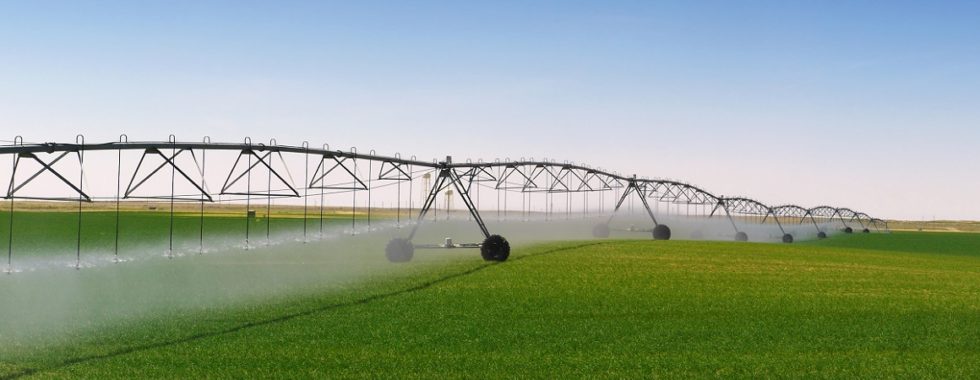Irrigation water quality
The quality and composition of the irrigation water may affect plant development, soil structure and the irrigation system itself.
Irrigation water quality refers mainly to the chemical composition of the water, or more specifically, to the mineral composition of water.
Some physical and biological properties, such as turbidity and presence of algae, bacteria or viruses, also determine the suitability of the water for irrigation.
However, removing turbidity by filtration, for example, and pathogens, by disinfection, is usually more feasible than removing minerals from the water.
Agronomy Toolkit – Free Download
Are you looking for helpful resources to improve your agronomic practices? This FREE download includes essential information such as unit conversions, soil and water analysis interpretation, and more. Simply click the button below to access the toolkit and start improving your agronomic knowledge today. Don’t miss out on this valuable resource!
The quality criteria for irrigation water are entirely different than the criteria for drinking water. Furthermore, the quality criteria may vary among crops, as different crops have different susceptibilities to certain minerals or properties of the water.
The parameters, or chemical properties, that determine water quality for irrigation are:
- pH
- Salinity
- Hardness
- Alkalinity
- The ratio between sodium to calcium and magnesium (Sodium Adosrption Ratio – SAR)
- The concentration of specific minerals
The above parameters above are all obtained from the water mineral composition. These will be briefly explained here-under.
IRRIGATION WATER QUALITY IS DETERMINED BY THE SOURCE OF THE WATER
Knowing the source of your irrigation water can help you evaluate its quality for irrigation.
Irrigation quality of groundwater may be very different than the quality of surface water. Groundwater generally contain higher levels of dissolved salts (minerals) than surface water, while surface water may contain higher levels of turbidity and biological impurities.
The reason for this is that mineral rocks, which surround the groundwater, break down and dissolve into the water and constitute the source of dissolved salts in the water.
Surface water, on the other hand is exposed to the outside environment and to runoff.
Mineral salts that are commonly found in natural water sources:
| Mineral / ion | Name | Comments |
| Ca2+ | Calcium | Essential plant nutrient.
Used for calculating SAR. |
| Mg2+ | Magnesium | Essential plant nutrient.
Used for calculating SAR |
| SO42- | Sulfate | Essential plant nutrient. |
| HCO32- | Bicarbonate | Used for calculating alkalinity |
| Na+ | Sodium | Used for calculating SAR. Might harm plants when concentration > 50ppm. Crops differ in their susceptibility. |
| Cl– | Chloride | Might harm crops at concentrations in water > 100 ppm. Crops differ in their susceptibility. |
| Fe
compounds |
Iron | Essential plant nutrient.
At concentrations > 1ppm might result in iron bacteria and clogging of irrigation system parts |
| B
compounds |
Boron | Essential plant nutrient.
Might harm crops at concentration > 0.5 ppm. Crops differ in their susceptibility. |
| F
compounds |
Fluoride | |
| K+ | Potassium | Essential plant nutrient.
Only low concentrations are usually found in natural water sources. |
| NO3– | Nitrate | Essential plant nutrient.
Reaches water sources as result of agricultural activity – leaching and runoff of fertilizers. |
IRRIGATION WATER pH
Irrigation water pH influences the solubility of mineral salts. Minerals that are not dissolved are not available for plants, as plants can only uptake minerals from an aqueous solution – directly from water or from the soil solution.
Most nutrients are available at a pH range of 5.5-6.5.
Because of its infinite volume, it is very difficult to impossible to affect soil pH by controlling the irrigation water pH. Therefore, adjusting water pH is important in the following cases:
- To avoid clogging of emitters (e.g. in drip irrigation) by mineral precipitation. For example, calcium carbonate.
- In hydroponics and soilless media, where irrigation water pH directly affects the availability of nutrients.
- When frequent irrigation is applied to the soil. In such case, water pH may affect nutrient uptake.
WATER SALINITY
Salinity is one of the water parameters that growers are most familiar with and relate to the quality of the irrigation water. Salinity level that is too high reduces the plant’s ability to absorb water. This might result in reduced yields, wilting, burned leaves and other symptoms. Water salinity is measured as TDS (Total Dissolved Salts) or as electrical conductivity (EC). Both relate to the total concentration of dissolved salts in the water.
WATER HARDNESS
Water hardness is basically the sum of the concentrations of calcium and magnesium in the water, expressed as ppm (parts per million) of CaCO3. Calcium and magnesium are both essential plant nutrients and adequate concentration of them in the water is beneficial. However, when water hardness that is too high, precipitation of calcium and magnesium salts might occur in the irrigation system, damage it or reduce its efficiency. Hardness that is too low might cause corrosion in the irrigation system.
Hardness as ppm CaCO3= Ca (as ppm CaCO3) + Mg (as ppm CaCO3) = ppm Ca x 2.5 + ppm Mg x 4.12
ALKALINITY
Alkalinity is measure of the ability of the water to resist changes in pH. It is calculated as the sum of carbonic acid (H2CO3), bicarbonates (HCO3–) and carbonates (CO32-) in the water. It is considered an important irrigation water quality parameter, as it is much more difficult to lower the pH of water with high alkalinity, than lowering the pH of water with low alkalinity, even if they both have the same initial pH level. This may affect the availability of many nutrients.
Alkalinity, like hardness, is expressed as ppm of CaCO3.
SAR – SODIUM ADSORPTION RATIO
The SAR is an irrigation water quality parameter that helps to estimate the potential of sodium in the water to adsorb to soil particles, in relation to calcium and magnesium. Irrigating with water with SAR values of 10 and more, might cause the soil to lose its structure and infiltration capacity. This is particularly true for soils with relatively high concentration of clay.
SAR is calculated in the following way:
SAR= Na/(√( Ca+Mg)/2)
Where all concentrations are expressed in meq/l.
CONCENTRATION OF SPECIFIC ELEMENTS
As indicated in table 1 above, different crops have different susceptibilities to certain elements. Sometimes, the difference is only a few parts per million.
For example, while tomato will tolerate irrigation water with boron concentration of up to 6 ppm, citrus will suffer boron toxicity at concentrations of above 0.5 ppm.
Therefore, the suitability of the water for irrigation and its quality may sometimes be determined based on one element only.




